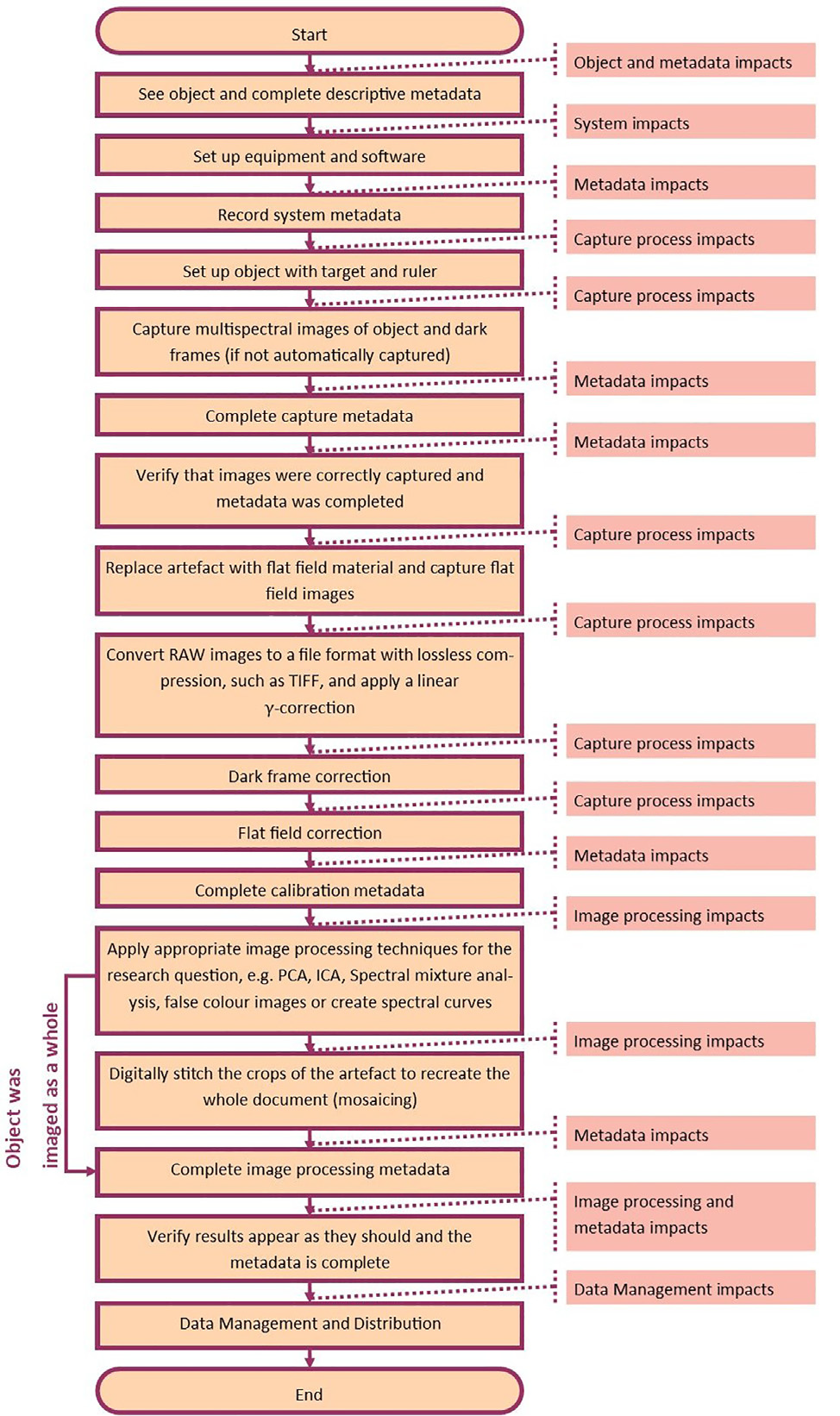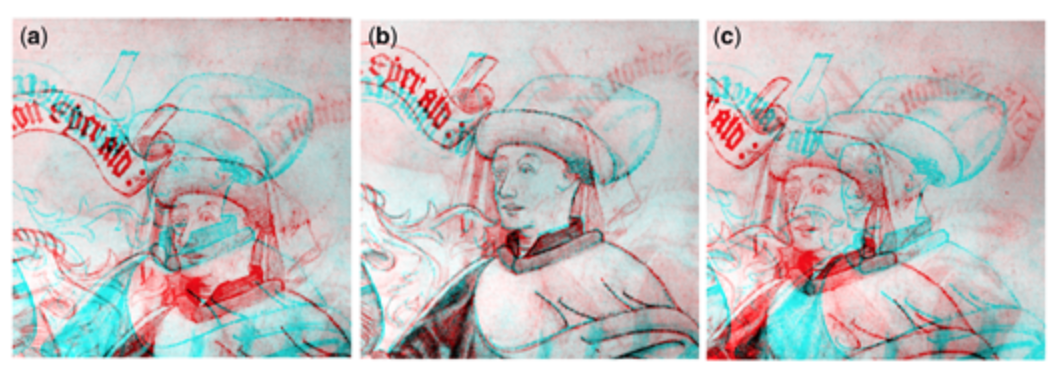Cerys Jones
Previous Postdoc

Contact
Where to Find Me
Malet Place Engineering Building
Torrington Place
London WC1E 7JE
United Kingdom
Feed
Tweets by uclResearch Interests
My research interests lie in the fields of Image processing, Spectral imaging and Machine learning.
About
Cerys was awarded a MMath mathematics degree from Cardiff University in 2015 and an MRes degree in science and engineering in arts, heritage and archaeology from UCL in 2016. She completed her PhD at UCL in multispectral imaging and image processing for heritage in 2020, and is now a postdoctoral researcher in the department of electronic and electrical engineering at UCL.
Publications
2020
Authors: C. Jones, C. Duffy, A. Gibson, and M. Terras
Journal/Conference: Journal of Cultural Heritage
Abstract: Although multispectral imaging (MSI) of cultural heritage, such as manuscripts, documents and artwork, is becoming more popular, a variety of approaches are taken and methods are often inconsistently documented. Furthermore, no overview of the process of MSI capture and analysis with current technology has previously been published. This research was undertaken to determine current best practice in the deployment of MSI, highlighting areas that need further research, whilst providing recommendations regarding approach and documentation. An Action Research methodology was used to characterise the current pipeline, including: literature review; unstructured interviews and discussion of results with practitioners; and reflective practice whilst undertaking MSI analysis. The pipeline and recommendations from this research will improve project management by increasing clarity of published outcomes, the reusability of data, and encouraging a more open discussion of process and application within the MSI community. The importance of thorough documentation is emphasised, which will encourage sharing of best practice and results, improving community deployment of the technique. The findings encourage efficient use and reporting of MSI, aiding access to historical analysis. We hope this research will be useful to digitisation professionals, curators and conservators, allowing them to compare and contrast current practices.
Link2019
Authors: C. Jones, W.A. Christens-Barry, M.B. Toth, M. Terras, and A. Gibson
Journal/Conference: Digital Scholarship in the Humanities
Abstract: Multispectral (MSI) imaging of historical documents can recover lost features, such as text or drawings. This technique involves capturing multiple images of a document illuminated using different wavelengths of light. The images created must be registered in order to ensure optimal results are produced from any subsequent image processing techniques. However, the images may be misaligned due to the presence of optical elements such as filters, or because they were acquired at different times or because the images were captured from different copies of the documents . There is little prior work or information available about which image registration techniques are most appropriate. Image registration of multispectral images is challenging as the illumination changes for each image and the features visible in images captured at different wavelengths may not appear consistently throughout the image sequence. Here, we compare three image registration techniques: two based on similarity measures and a method based on phase correlation. These methods are characterized by applying them to realistic surrogate images and then assessed on three different sets of real multispectral images. Mutual information is recommended as a measure for affine image registration when working with multispectral images of documentary material as it was proven to be more robust than the other techniques tested.
Link2018
Authors: A. Gibson, K. E. Piquette, U. Bergmann, W. C.-B. Graham, D. M. Endrizzi, S. Fan, S. Farsiu, A. Fitzgerald, J. Griffiths, C. Jones, G. Li, P. L. Manning, C. Jones, R. Mazza, D. Mills, P. Modregger, P. R. T. Munro, A. Olivo, A. Stevenson, B. Venugopal, V. W. Roy, A. Wogelius, M. B. Toth and M. Terra
Journal/Conference: Heritage Science
Abstract: Ancient Egyptian mummies were often covered with an outer casing, panels and masks made from cartonnage: a lightweight material made from linen, plaster, and recycled papyrus held together with adhesive. Egyptologists, papyrologists, and historians aim to recover and read extant text on the papyrus contained within cartonnage layers, but some methods, such as dissolving mummy casings, are destructive. The use of an advanced range of different imaging modalities was investigated to test the feasibility of non-destructive approaches applied to multi-layered papyrus found in ancient Egyptian mummy cartonnage. Eight different techniques were compared by imaging four synthetic phantoms designed to provide robust, well-understood, yet relevant sample standards using modern papyrus and replica inks. The techniques include optical (multispectral imaging with reflection and transillumination, and optical coherence tomography), X-ray (X-ray fluorescence imaging, X-ray fluorescence spectroscopy, X-ray micro computed tomography and phase contrast X-ray) and terahertz-based approaches. Optical imaging techniques were able to detect inks on all four phantoms, but were unable to significantly penetrate papyrus. X-ray-based techniques were sensitive to iron-based inks with excellent penetration but were not able to detect carbon-based inks. However, using terahertz imaging, it was possible to detect carbon-based inks with good penetration but with less sensitivity to iron-based inks. The phantoms allowed reliable and repeatable tests to be made at multiple sites on three continents. The tests demonstrated that each imaging modality needs to be optimised for this particular application: it is, in general, not sufficient to repurpose an existing device without modification. Furthermore, it is likely that no single imaging technique will to be able to robustly detect and enable the reading of text within ancient Egyptian mummy cartonnage. However, by carefully selecting, optimising and combining techniques, text contained within these fragile and rare artefacts may eventually be open to non-destructive imaging, identification, and interpretation.
Link
